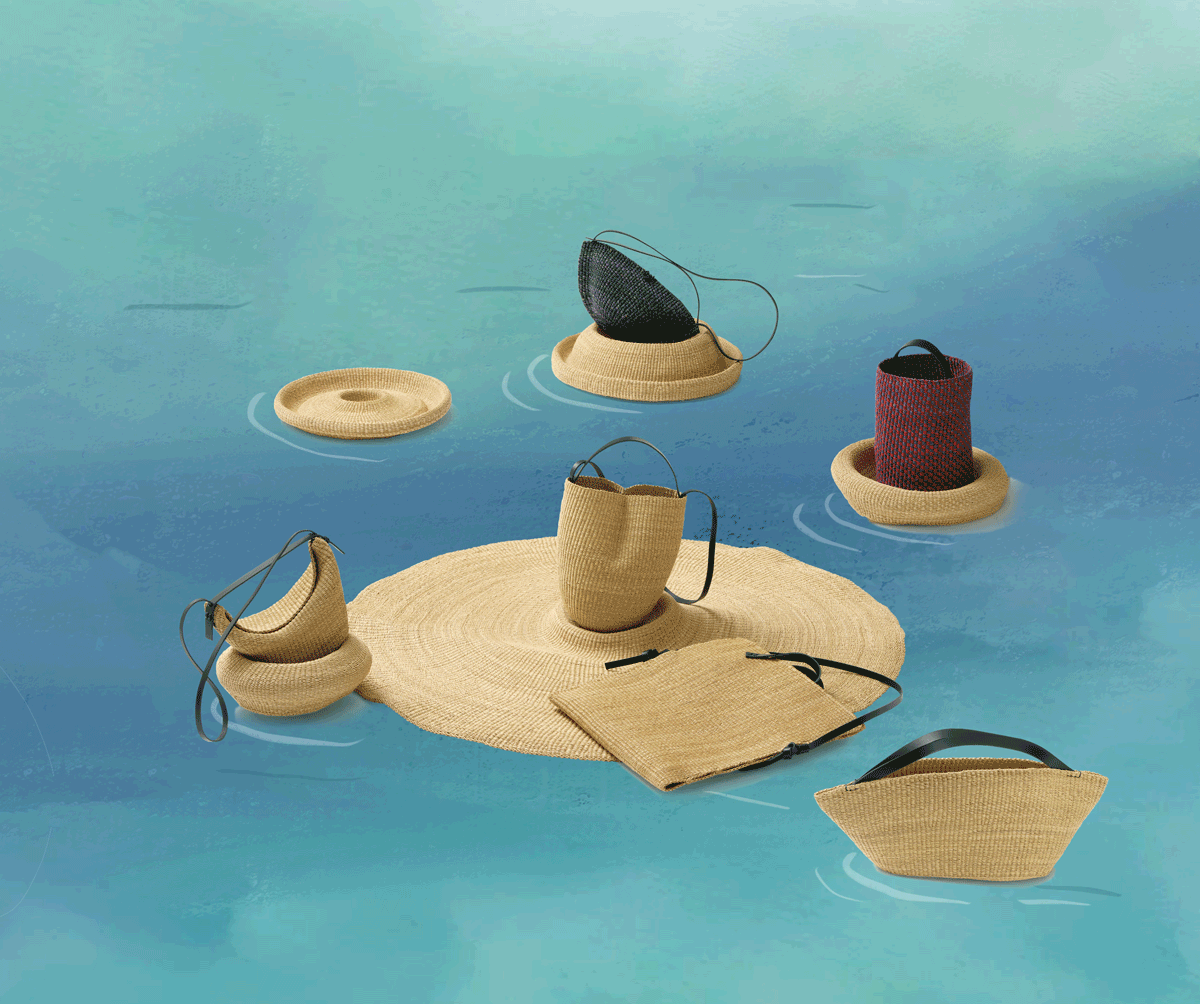Straw Bag Creator Inès Bressand Links France and Ghana
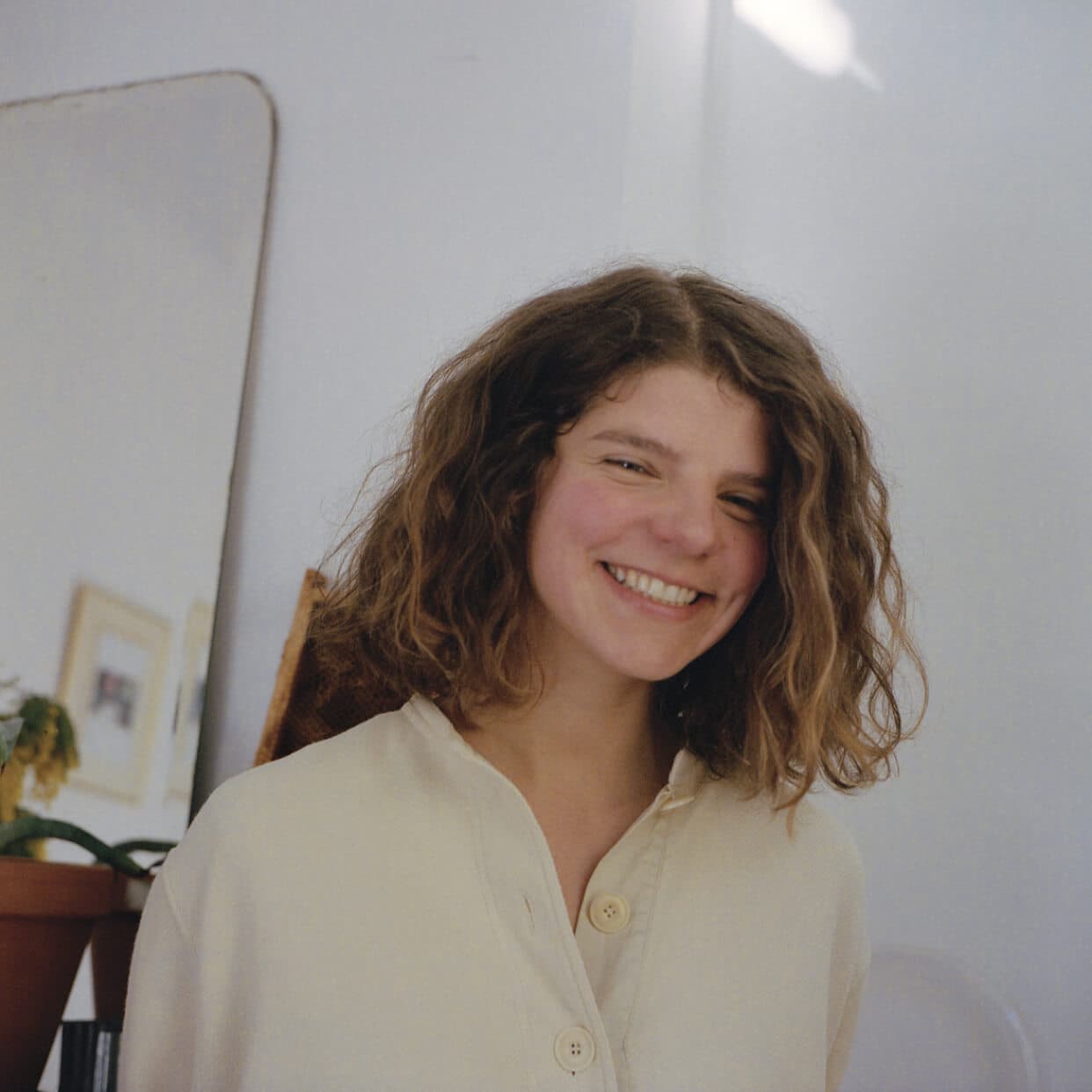
©Photography: Antoine Chanteloup
Inès Bressand's straw bag creations joined FRAW last year, and now that summer is here, we decided to talk to her about what goes on behind the scenes of these “strange” bags, out of curiosity for the creator.
One thing is certain: Inès is a dynamic creator. A testament to ancient craftsmanship, Inès Bressand's work is alive and well, thanks to her favorite material, elephant grass. This wild, native plant not only allows her to weave bags, but also connects her to the craftsmen. She aspires to create beautiful objects that are as much about sharing as they are about good stories.
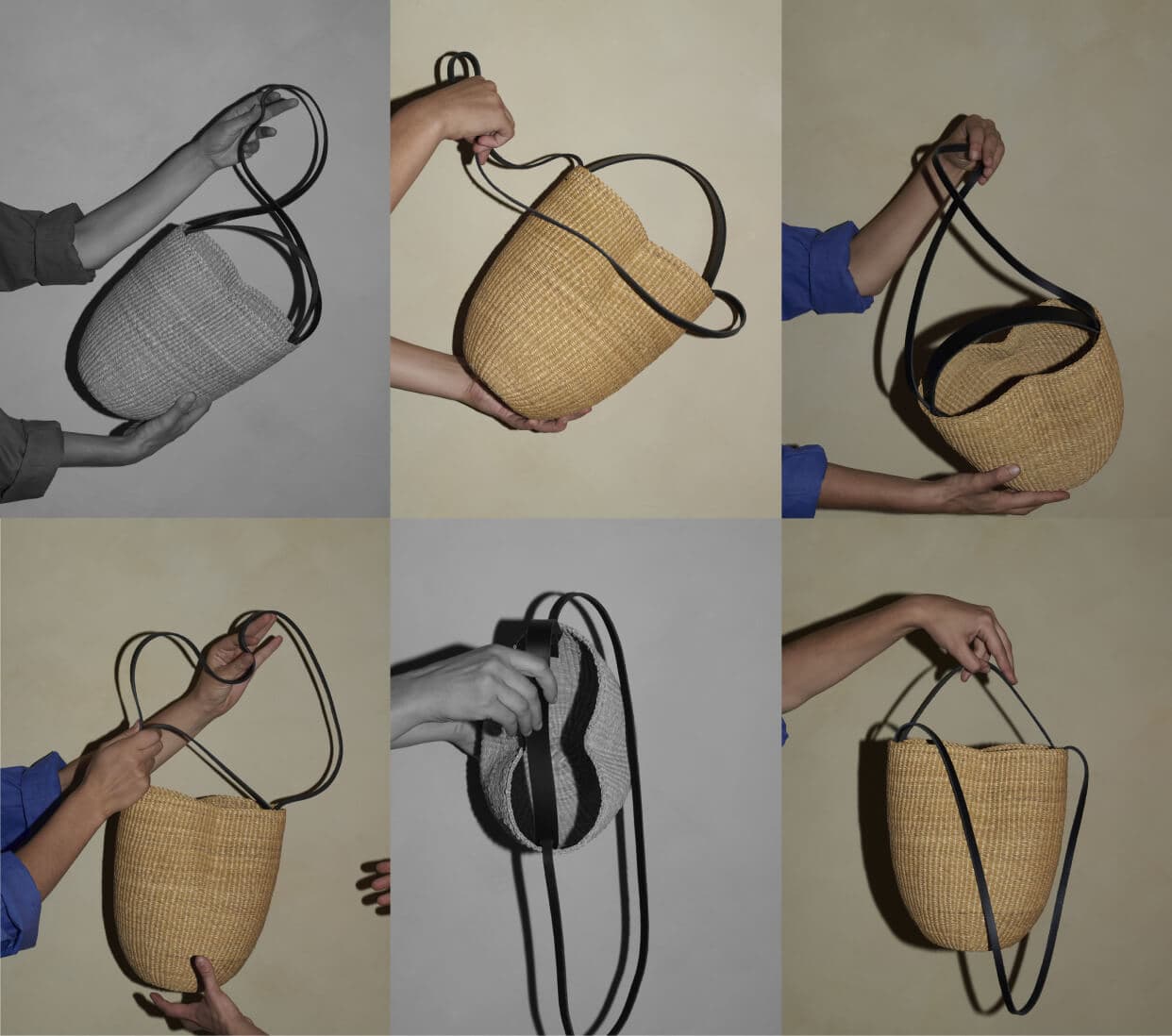
Q1
How does each bag come into being? What is the design and production process like?
The entire design and production process takes place across Ghana and France. The raw materials used for the weaving of the bags come from the grasslands of southern Ghana, where they are reprocessed locally before entering the weaving process. We worked with craft centers in Ghana to create the work in Ghana, working with artisans to identify different base shapes and determine the initial shape of the bag body. The straw woven bag bodies need to be transported from Ghana to France, where they are reshaped in water to achieve the extruded effect, a technique derived from hat making. Finally, I work with my colleagues on the leather, designing and sewing the tanned leather onto the straw bag to complete the piece.
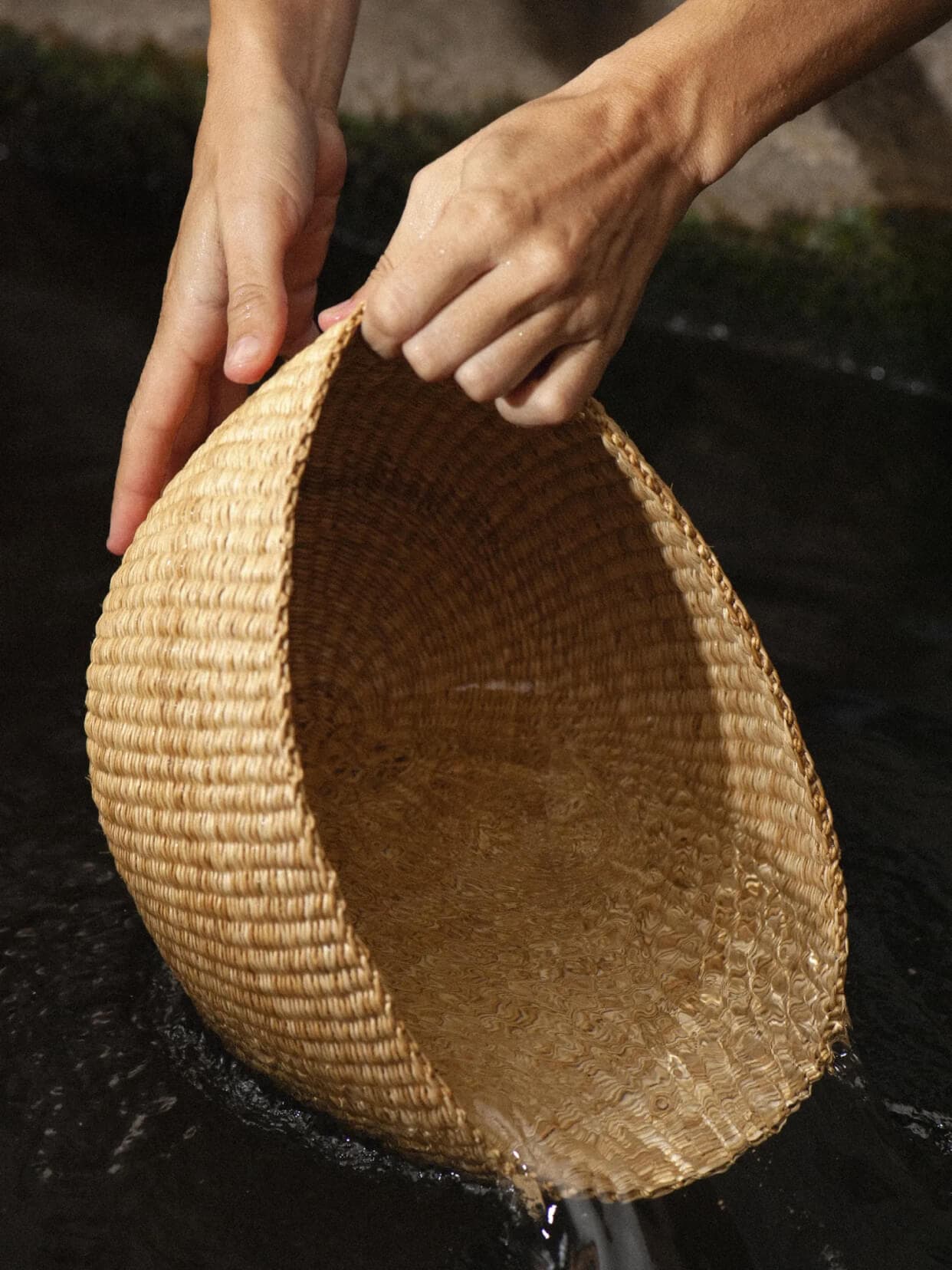
The prototype of the bag, woven in Ghana, is reshaped after being soaked in water.
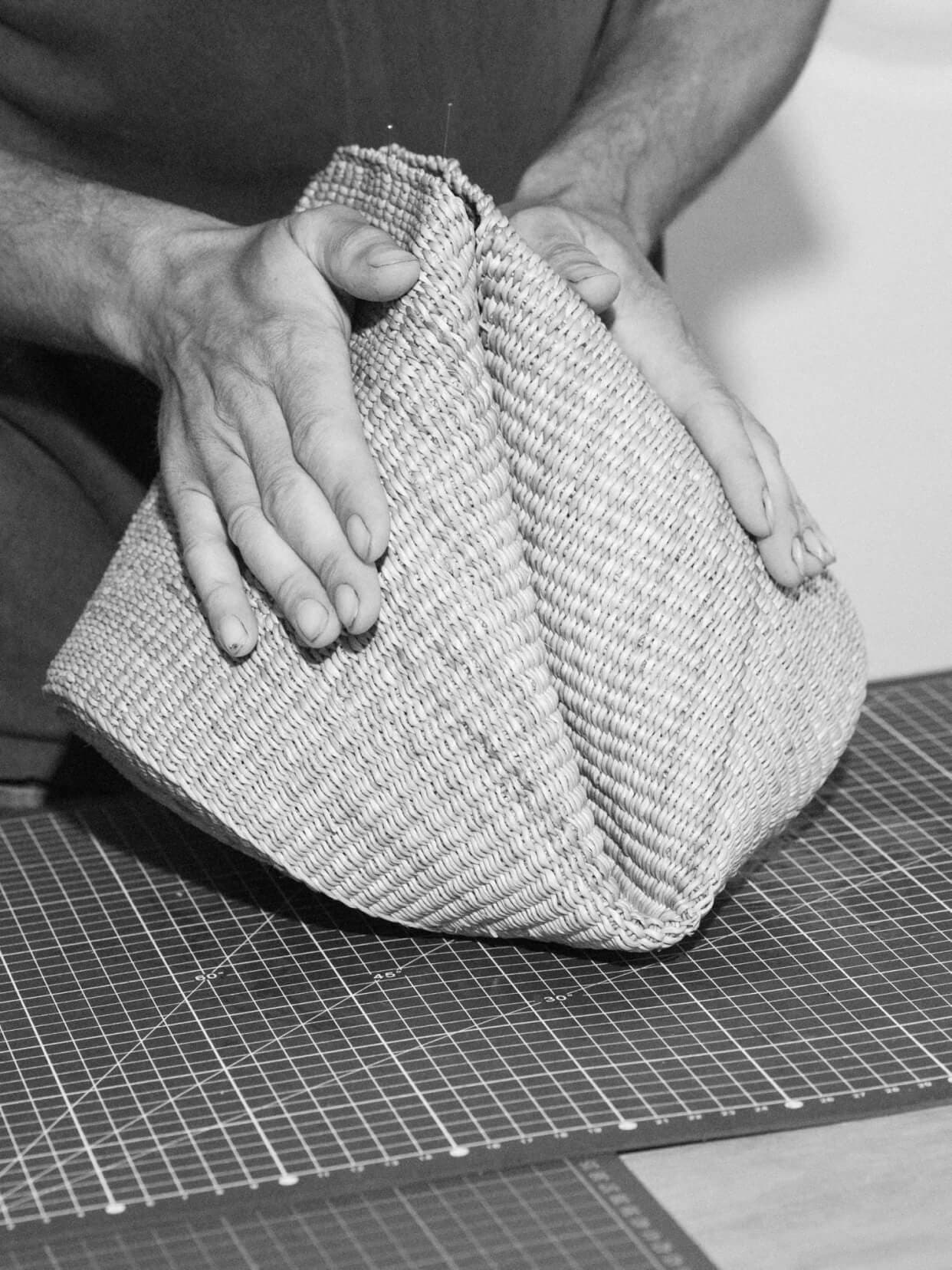
Q2
What kind of thinking goes into the design of your work, whether it's bags or furniture?
I'm fascinated by some of the basic archetypes, think about how humans actually developed these shapes and materials. And they are universal to almost every culture! These objects are integral to our lives and define us in turn. For me, this is the basis of the so-called “minimalist style”. I also enjoy working with artisans, which allows me to get in touch with the material, learn about its properties, and understand the mysteries of the process. I like to reinterpret these basic elements from my own point of view and give them a new image in a subtle way. I design for everyday life, and I want the user to see the durability of simple materials as well: they can be used for a long time with a good finish, and on top of that, it's just a matter of incorporating a bit of minimalist and sculptural design language. Whether I'm designing furniture or bags, the process is the same.
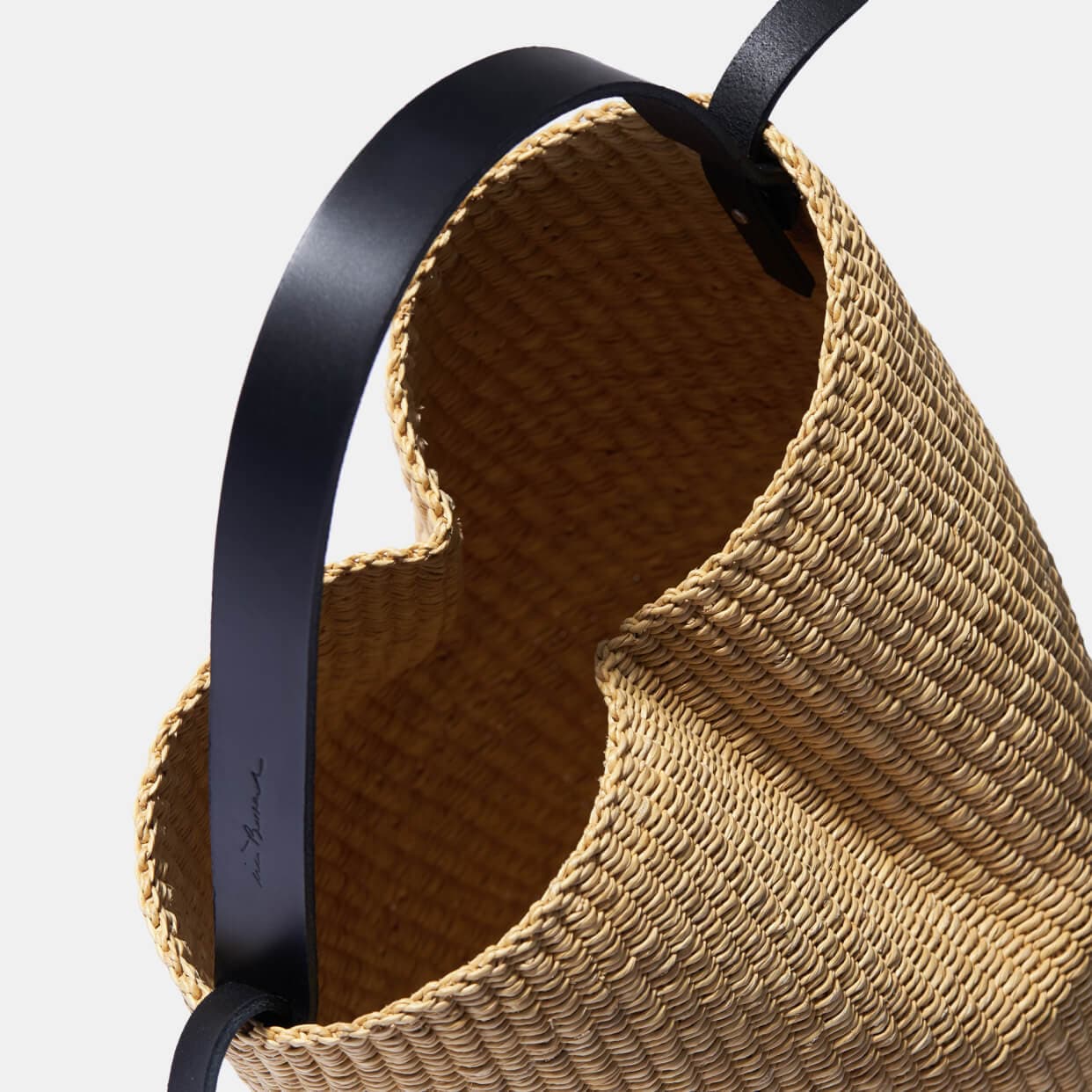
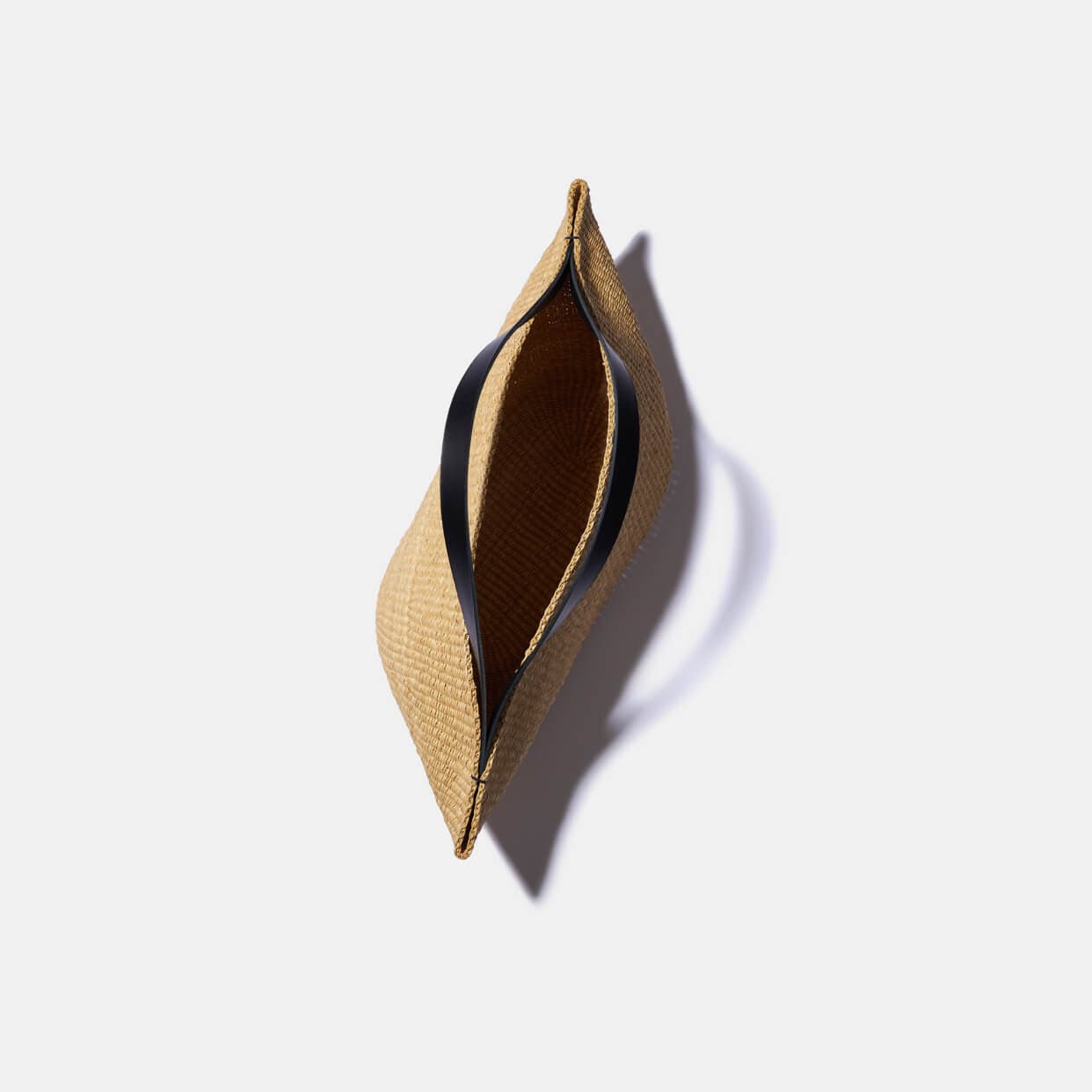
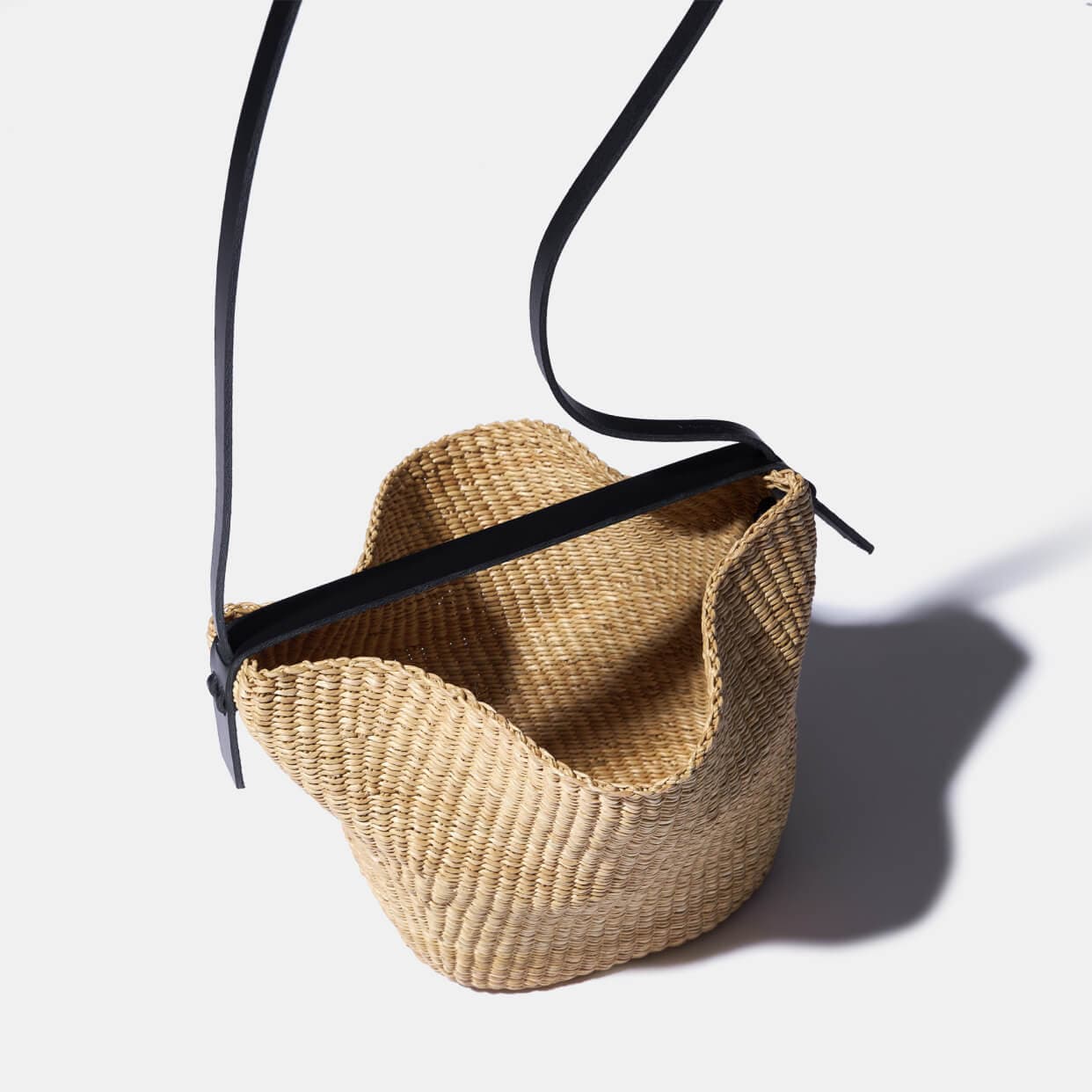
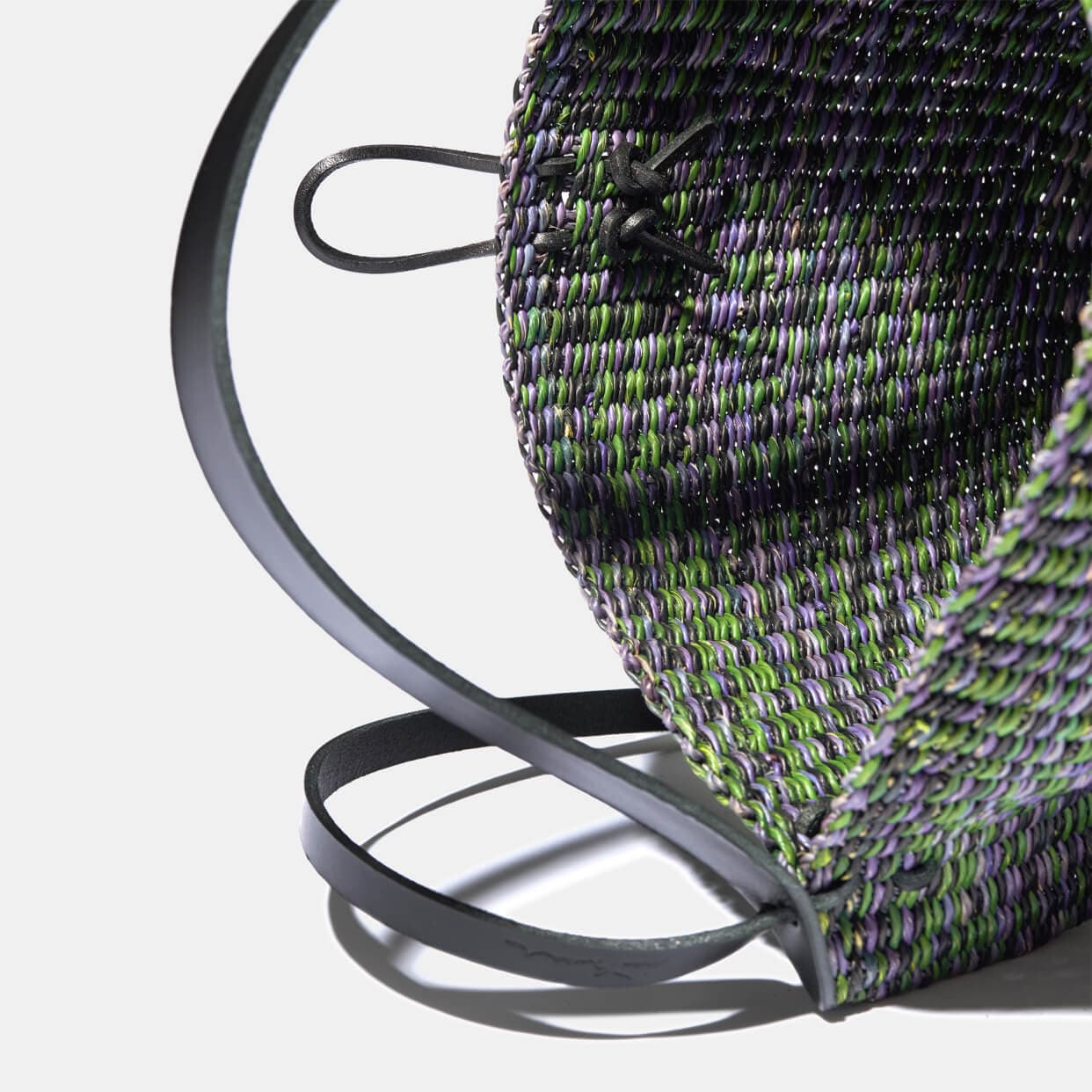
Q3
Working with Ghanaian weavers sounds great.
The experience of working with Ghanaian artisans and living there was very colorful. Let me tell you about the funny moments! Since the body of the bag is woven in Ghana and then shaped and followed by the process in France, when I first brought back the finished bag from France, woven in Ghana but with leather handles, the Ghanaian weavers were so amazed they couldn't believe that they were making such a beautiful item! The lovely Ghanaian ladies started carrying or carrying these bags on their backs and would pose for photos, haha. But then again, they use the big pots on their heads to transport everything in their daily lives and don't use the bags. That's why I always get asked what these bags are for. It seems like a bit of a contradiction for our “knitting experts”, but for me, it's fun!
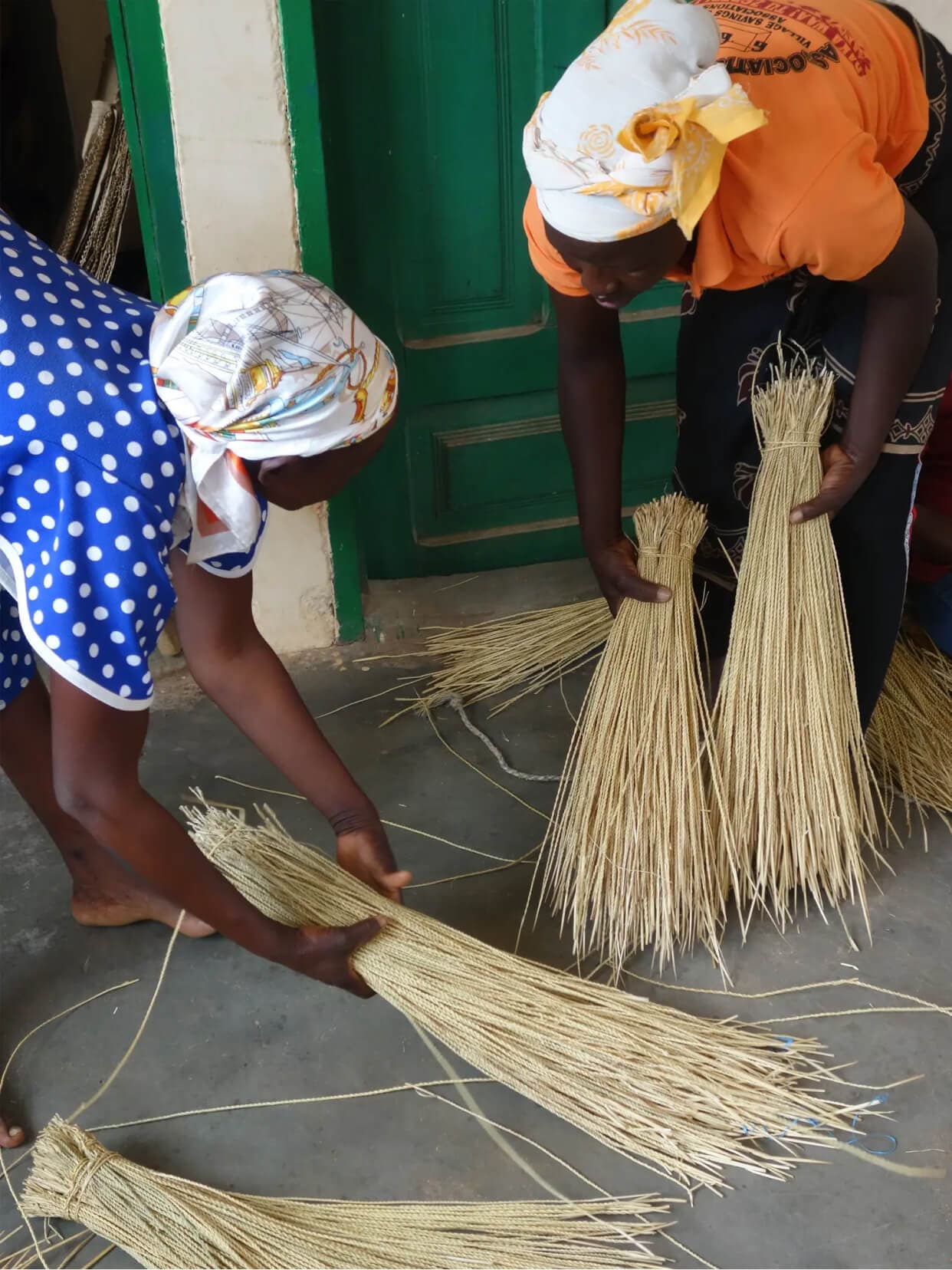
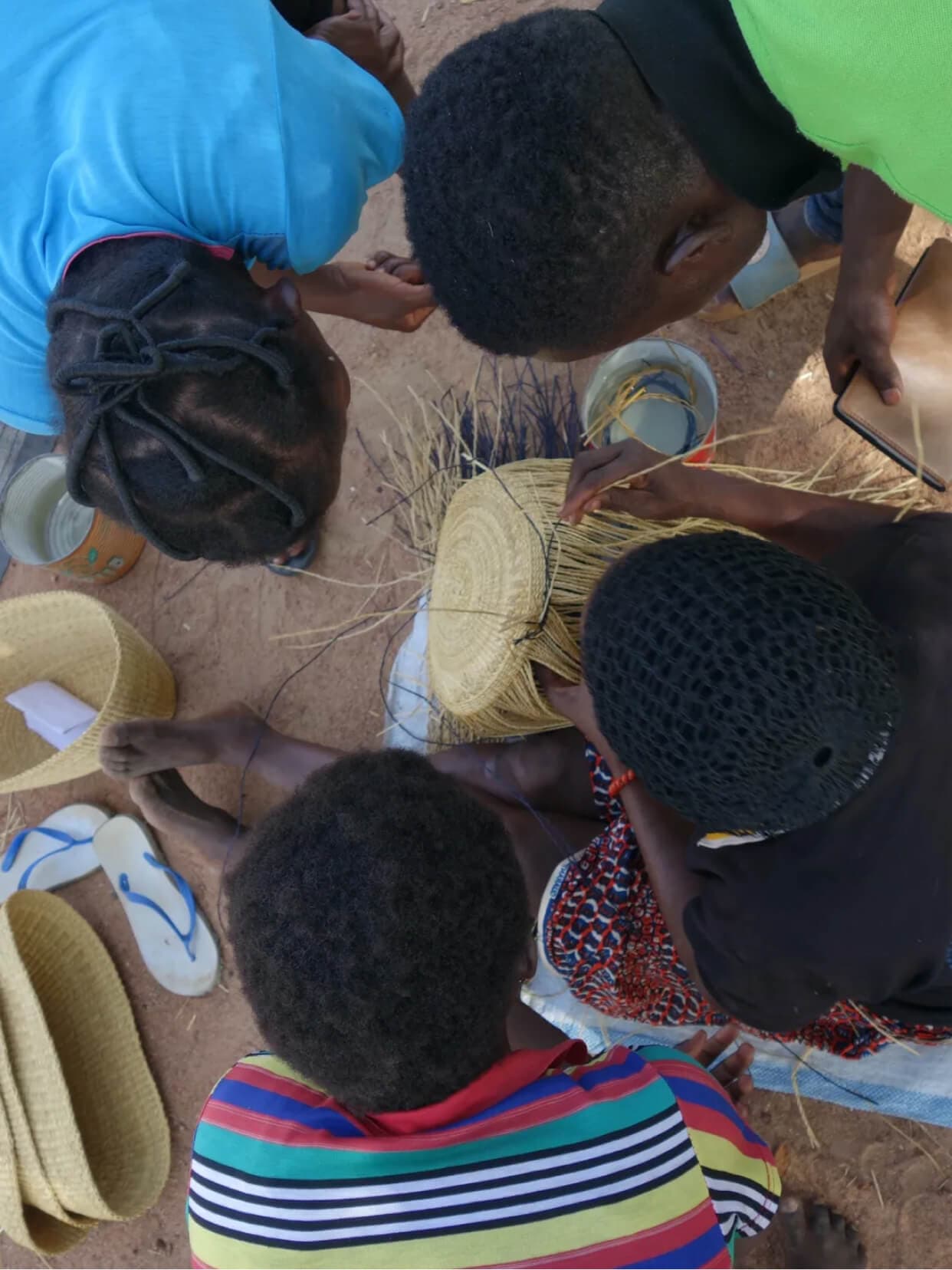
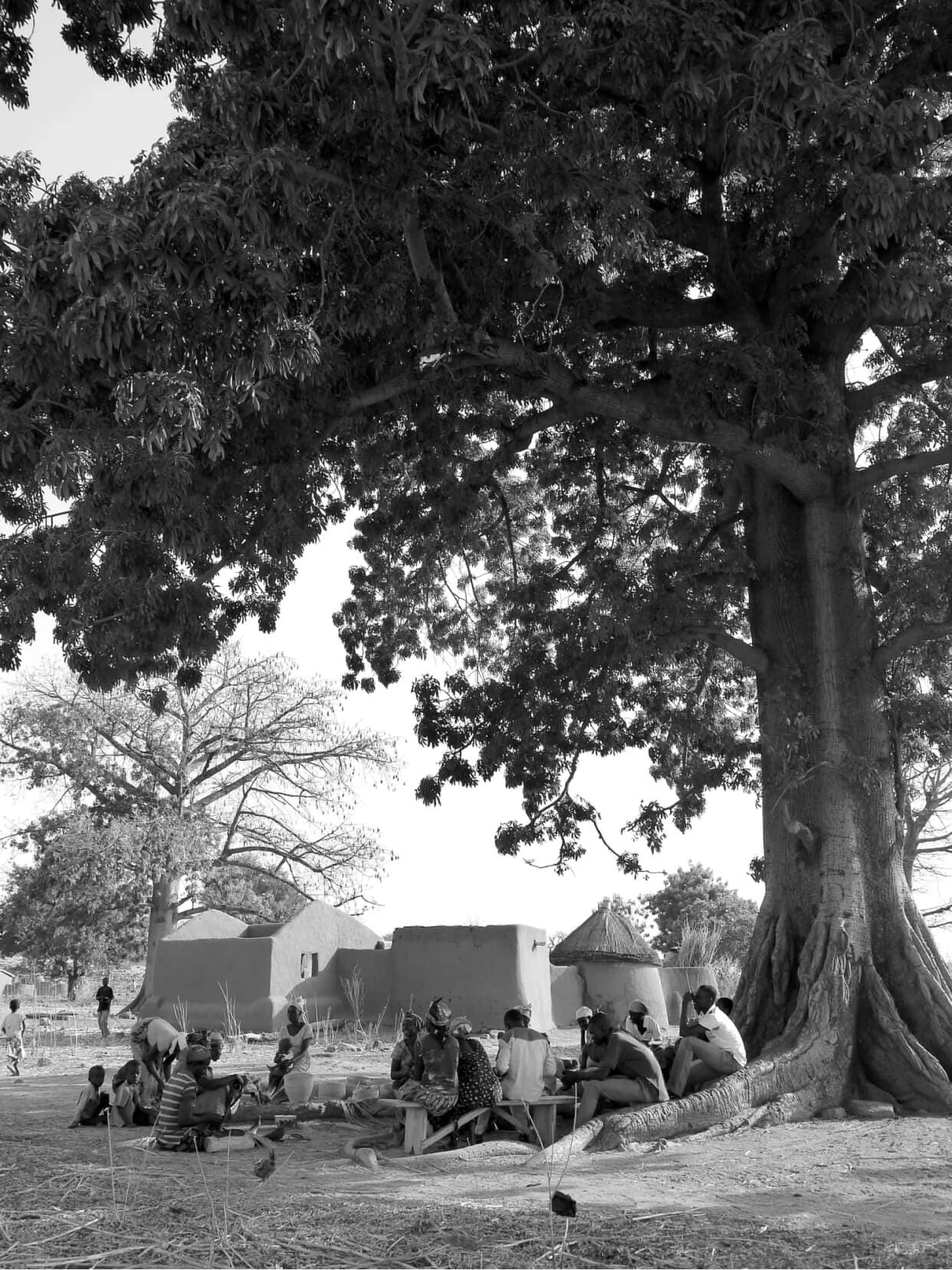
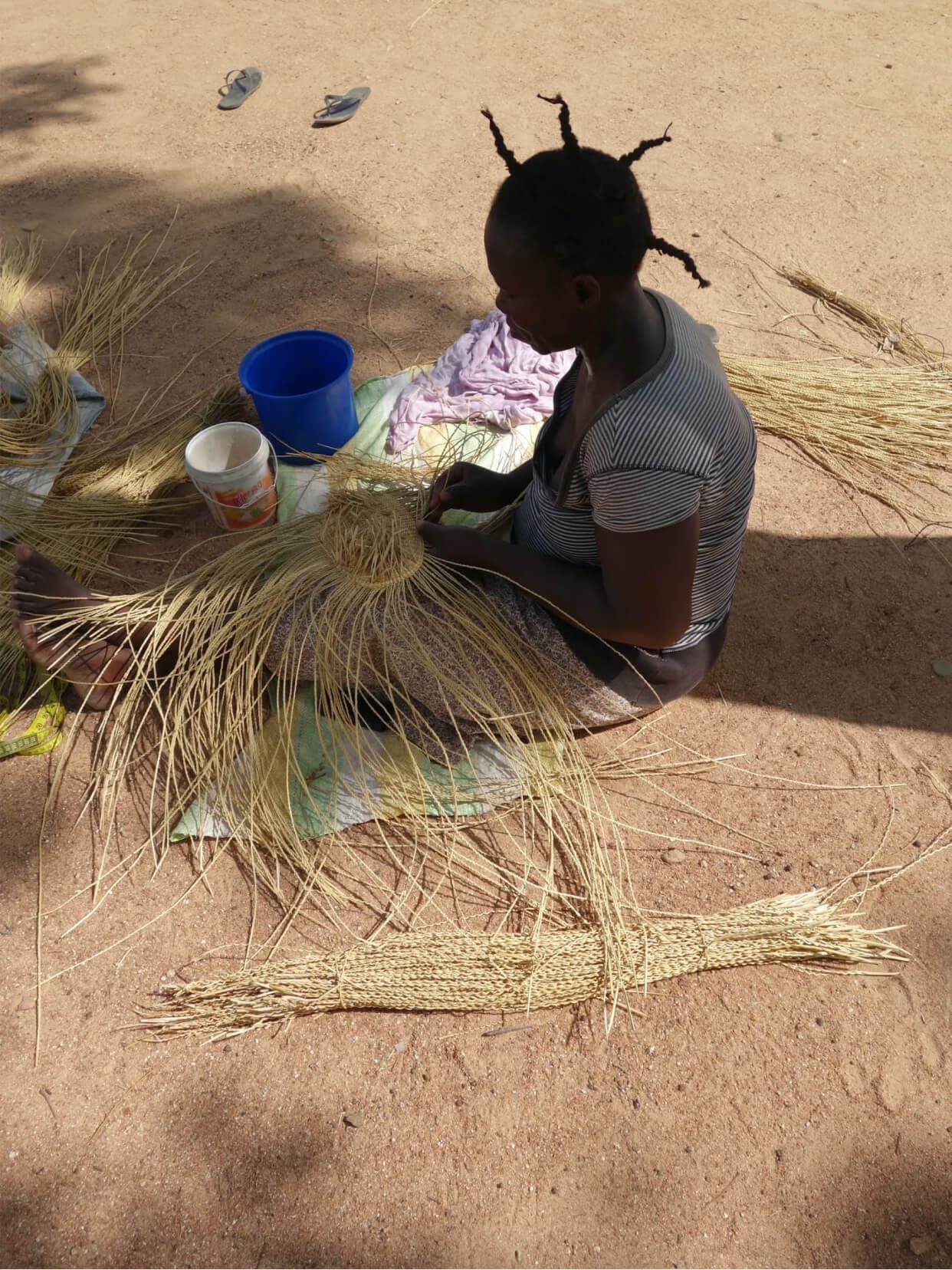
Q4
How do you take inspiration from local crafts and incorporate these unique elements into your designs?
Most of my product designs are very collaborative processes. It starts with me observing the materials and working with the artisans to manipulate them. Understanding the properties of the materials is a prerequisite for all subsequent designs. The final product is partly influenced by me, but more importantly it is based on the artisans' and my shared understanding of the materials, including their limitations, and the artisans' interpretation of the drawings I have designed. It's like a protracted game of ping-pong, with both of us working together to give feedback over and over again, experimenting, sketching, and even reshaping the form at a later stage in my studio in Marseille ...... Each design is not set in stone, and I often start a new design from previous sketches.
I've always maintained an approach that favors sculptural work, and am not striving for bags that are as functional as possible, because I want them to be attractive and original in their form. As long as a bag doesn't have an interesting enough shape, I won't stay with it.
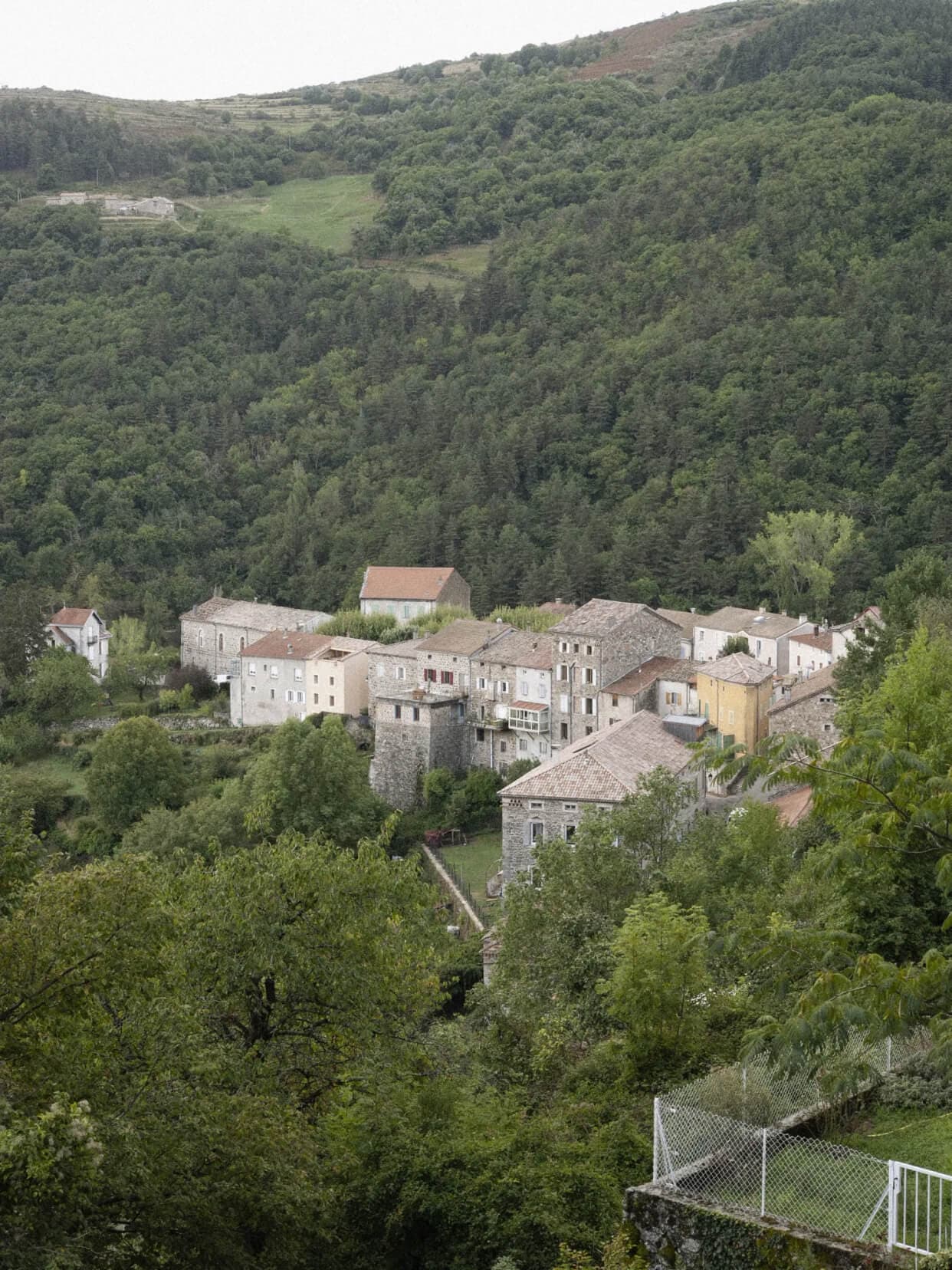
Inès Bressand's studio is located in Marseille, in the south of France.
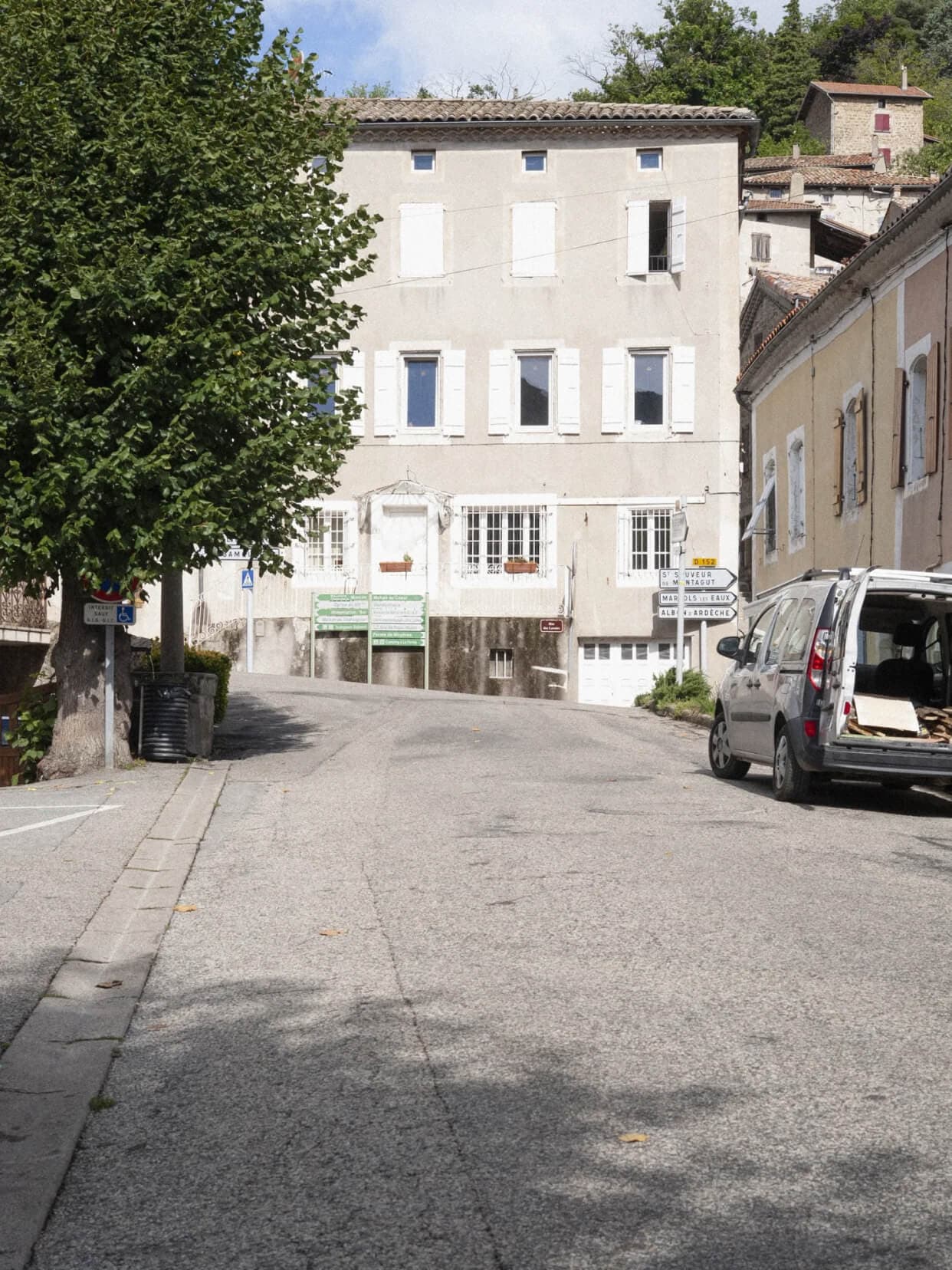
Q5
You often see a lot of natural elements in your designs.
Yes, I spend a lot of time in nature, to the point that sometimes I feel like I should be working instead of always hiking. But in the process of focusing on the walk, there is again a lot of inspiration that inspires my designs, and I rely on this idea to balance out the guilt I feel about my work. The body and brain can breathe freely on a hike, and I become more sensitive to nature, and perhaps my designs reflect that.

The skin of the fruit grows and changes with the environment, protecting the flesh and seeds. These woven bags are like the fruits on a tree, with a slightly rough texture on the surface, and their color will gradually change with use. I will choose one to carry daily; it will be like an envelope, holding all the moments that accompany me in my daily life.
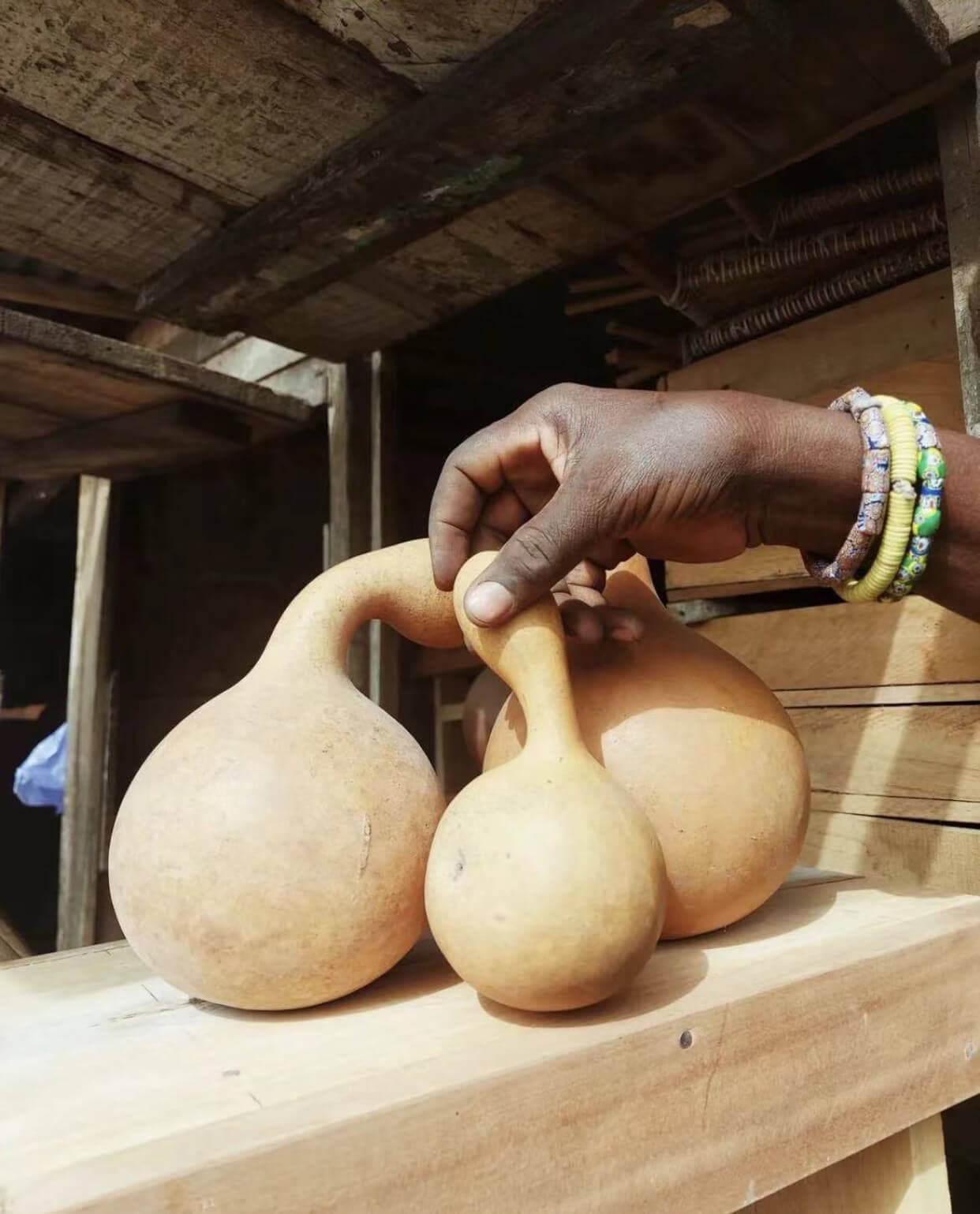
Q6
You mentioned before preferring hand-drawing to computers.
I don't do computerized drawing at all, and I don't even know how to do it (nor do I want to, laughs). In general, I prefer a more direct touch: it's easier and faster to sketch something out on paper!
It is interesting to note that during the back-and-forth conversations, this young and dynamic creator is not only busy creating new works, but also trying to “create” his own place, an experience that inspires us as well.
Q7
It's exciting to hear that you're renovating your home! Any interesting plans?
What I'm doing to this house is much more than a “renovation”: I've spent the last 3 months tearing down walls, building a new structure, adding insulation, removing old carpet and scrubbing out glue, refinishing oak floors, and even messing around with the plaster section myself ...... I've learned a lot in this process. I learned so much from this process and I feel like I know every inch of this room. But it was a very difficult process!
While this remodeling renovation gave me the opportunity to try it out, I had to accept the realities: including limited time, money, and square footage. The previous room's decor was very old, and while I made a lot of compromises, I'm very happy with the results. I didn't remove the bathroom like I had dreamed of and put the bathtub in the living room; I'll figure out how to make that happen afterward! Mom was already shocked by the house when she came over because our bathroom only had a curtain and no door...
Next step is to add more new furniture. The sun has been shining lately and I'm almost done removing construction materials from the balcony, so it's time to enjoy my home!
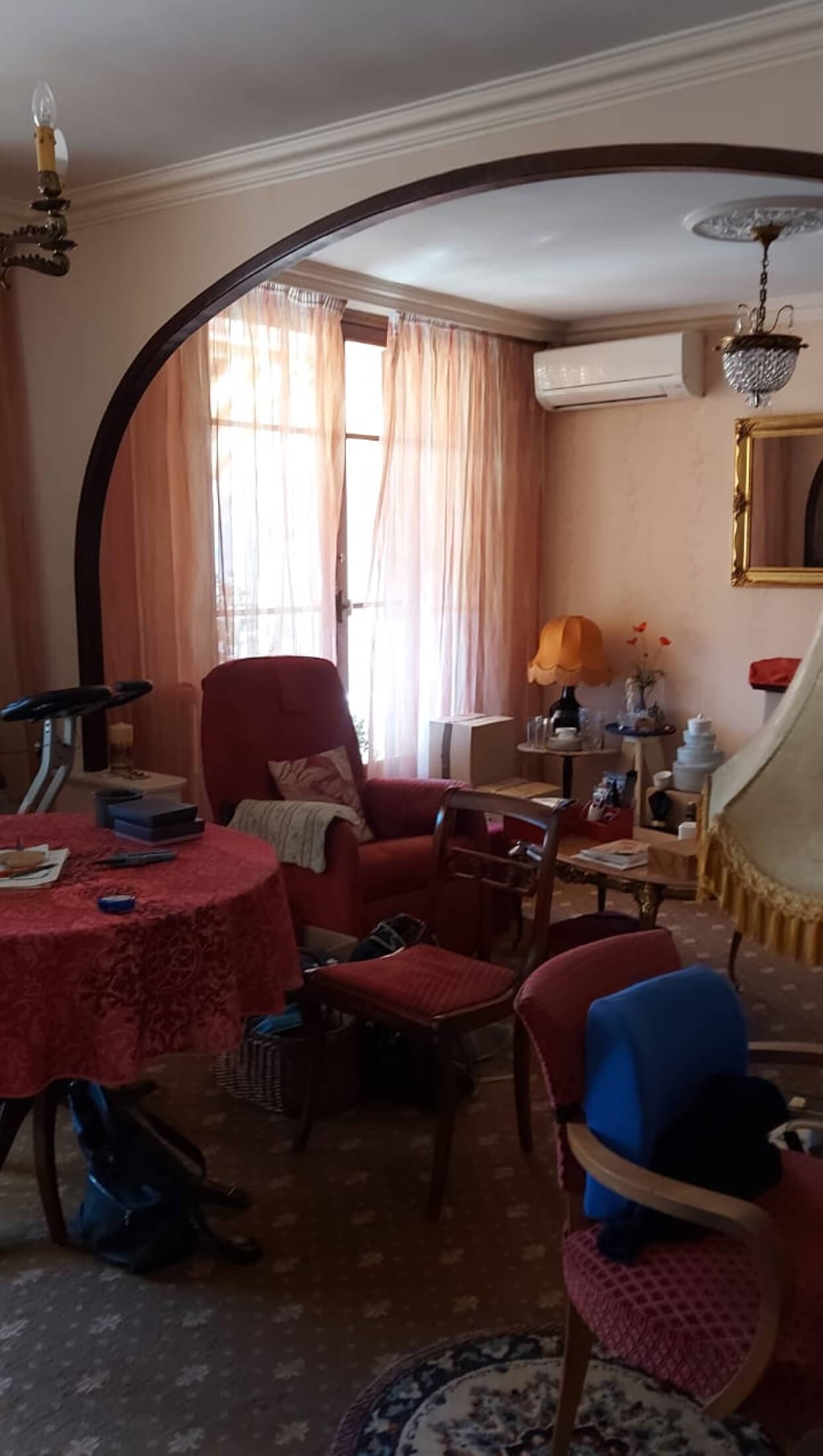
The original look
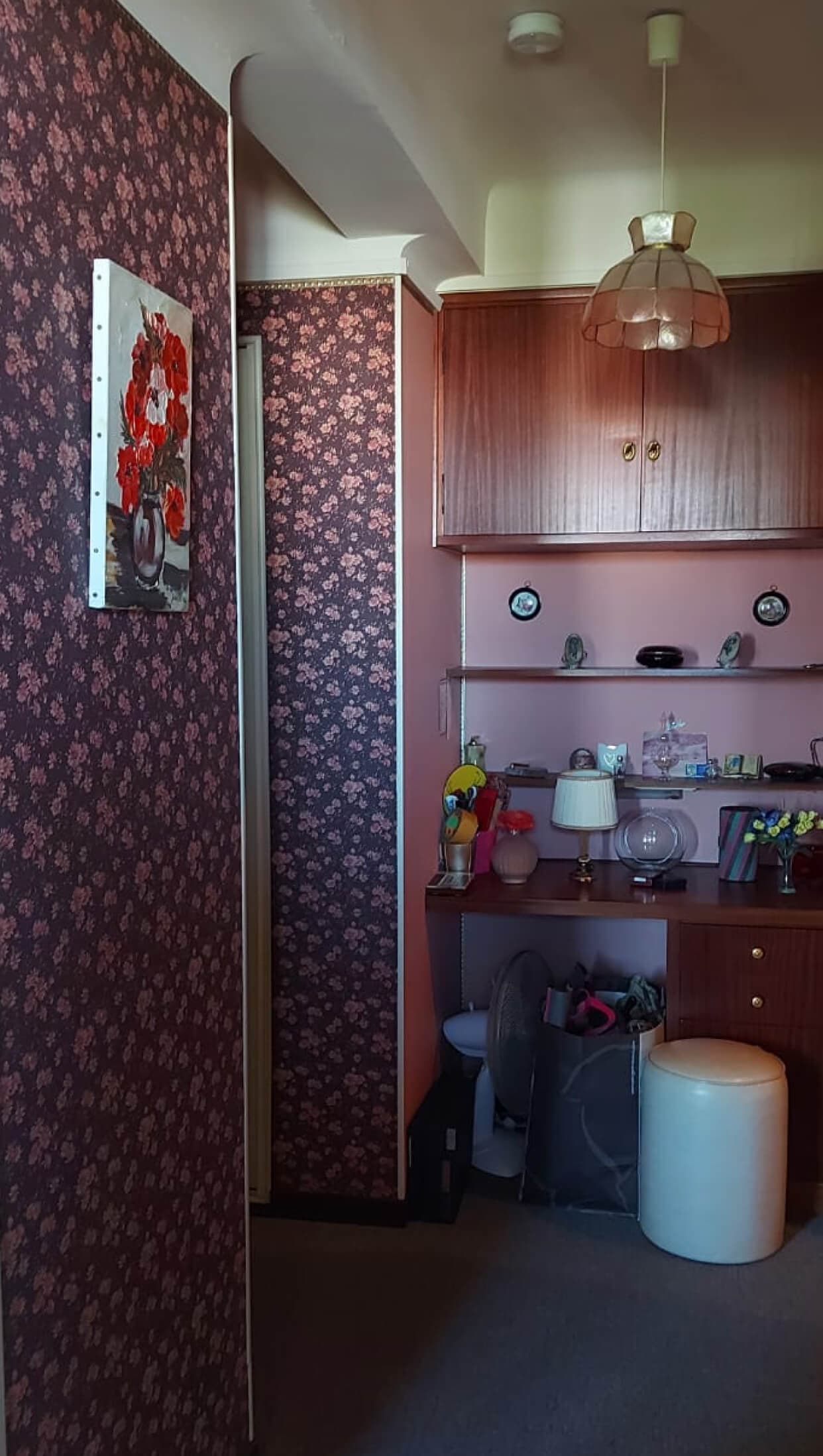
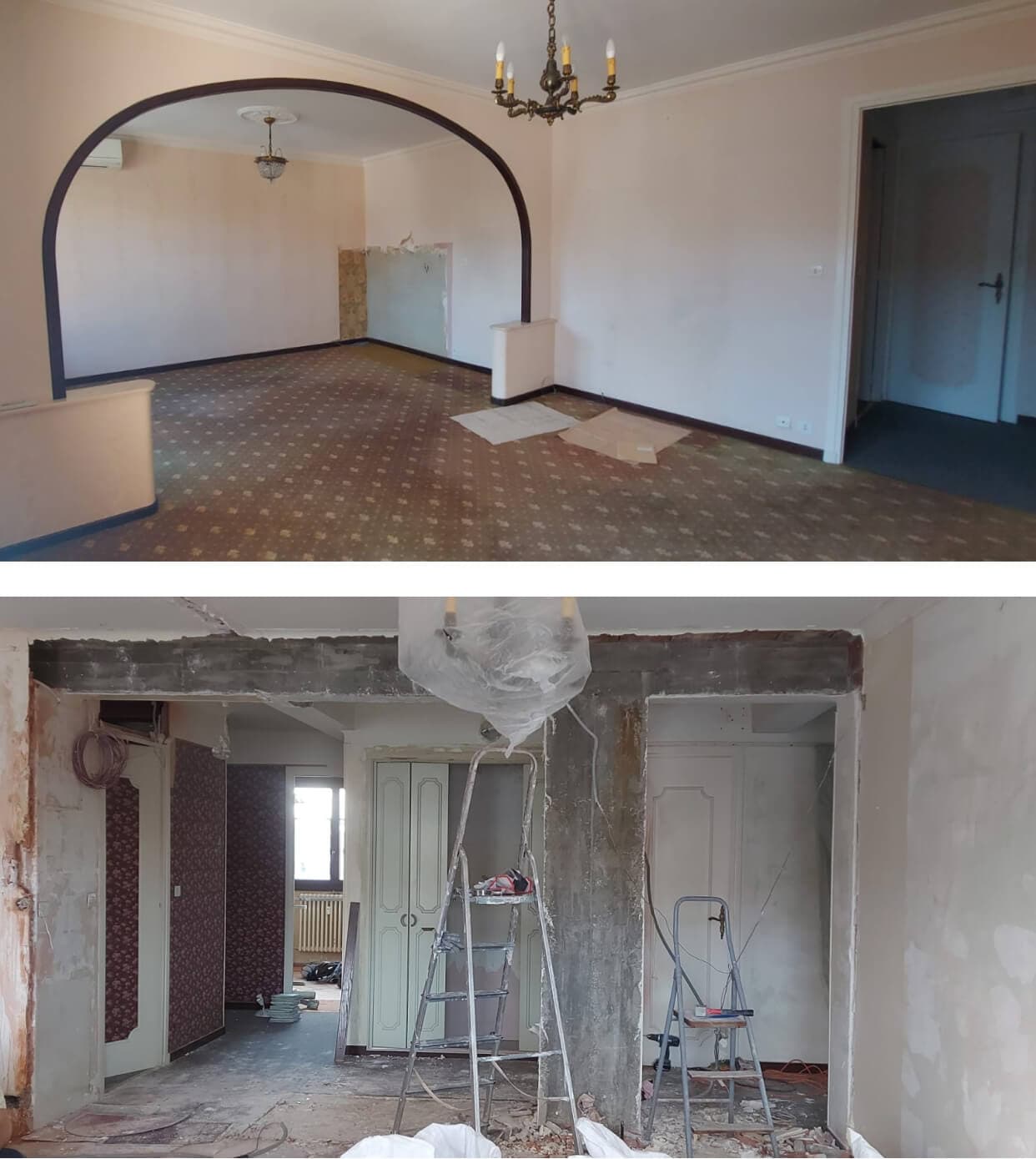
Under renovation/demolition.
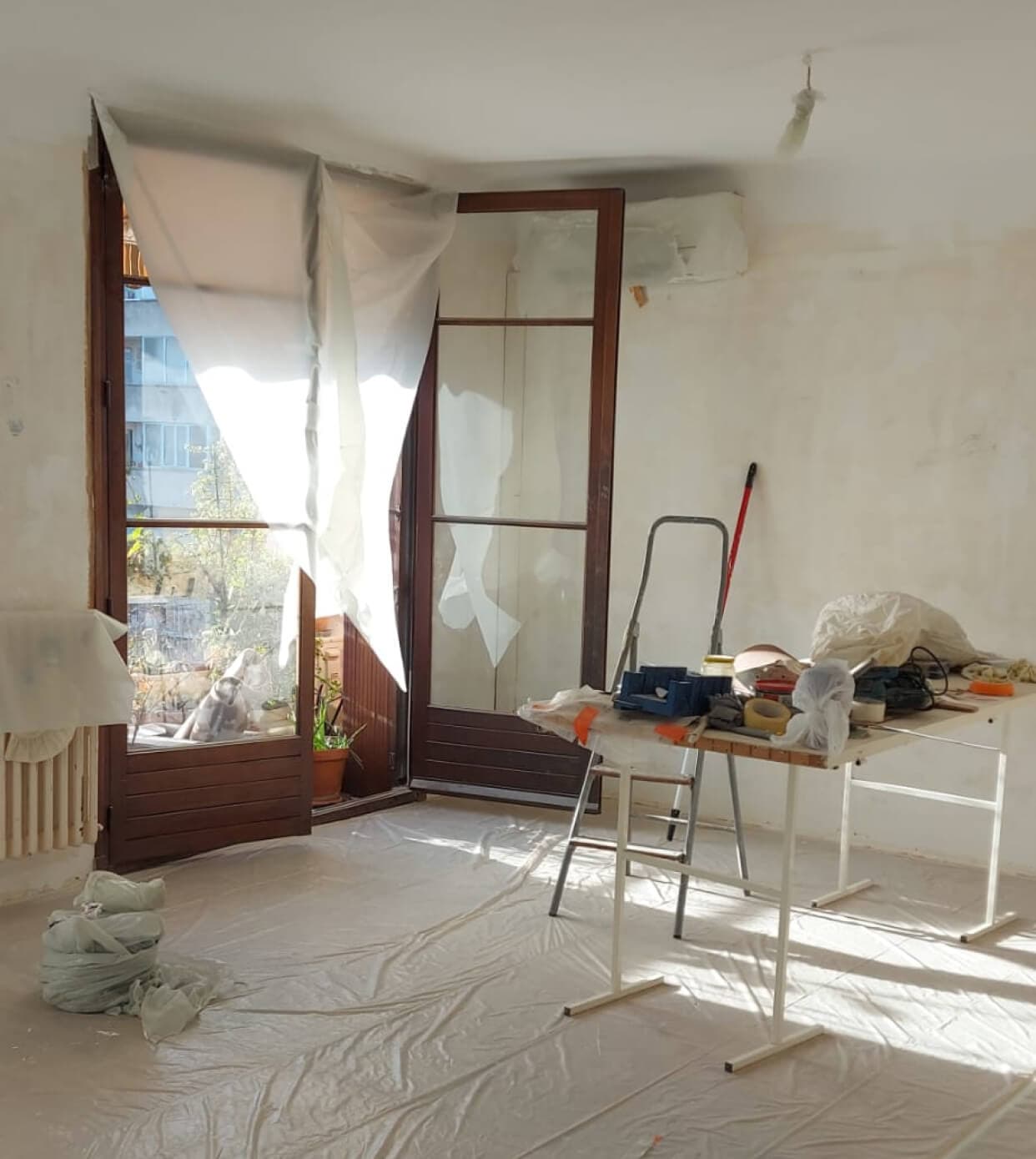
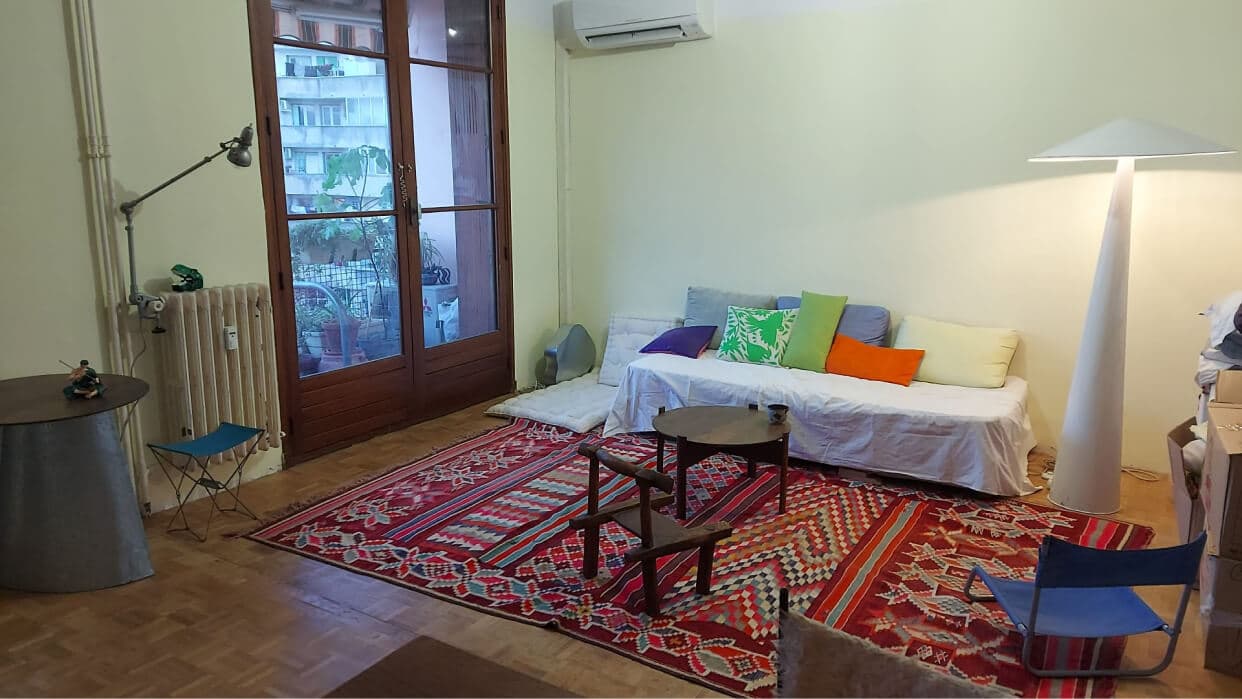
Current look
Q8
What is the most important thing for you about this house?
Going through the process mentioned above, this home is a huge achievement for me: to be able to get a room of my own through my own efforts means independence and security for me, a symbolism that is very strong, especially when you did most of the remodeling and designing by hand.
However, my favorite is still sleeping in a tent in nature! So, although I feel good at home, for me it's not strictly a “safe haven”: I'm happy to have a life within these walls, my roommate invites people over, our couch welcomes friends, and the contents of the house are in flux. But it is not my ultimate sanctuary in the abstract sense. There are no set-in-stone decorations in the home; in fact, for me, living in an over-planned environment can make me a little anxious. If I think my home is perfect and there is nothing that needs to be changed, it means I'm getting old and no longer expect anything from life! I don't like the decorating style where everything is organized ... That's as impersonal as a boring hotel.
Q9
Did the process also continue your love of primitive shapes and materials?
Yes, I love raw materials. During the renovation process, I left the rough concrete columns and previously hidden oak floors directly exposed, and the walls were painted with lime paint after removing the wallpaper. Using natural materials made the process more experimental and less harmful.
The best thing is that I finally had the opportunity to live in my favorite color, knowing that I had previously been surrounded by white walls my whole life, and I was hoping that the world would change its obsession with not painting everywhere white!
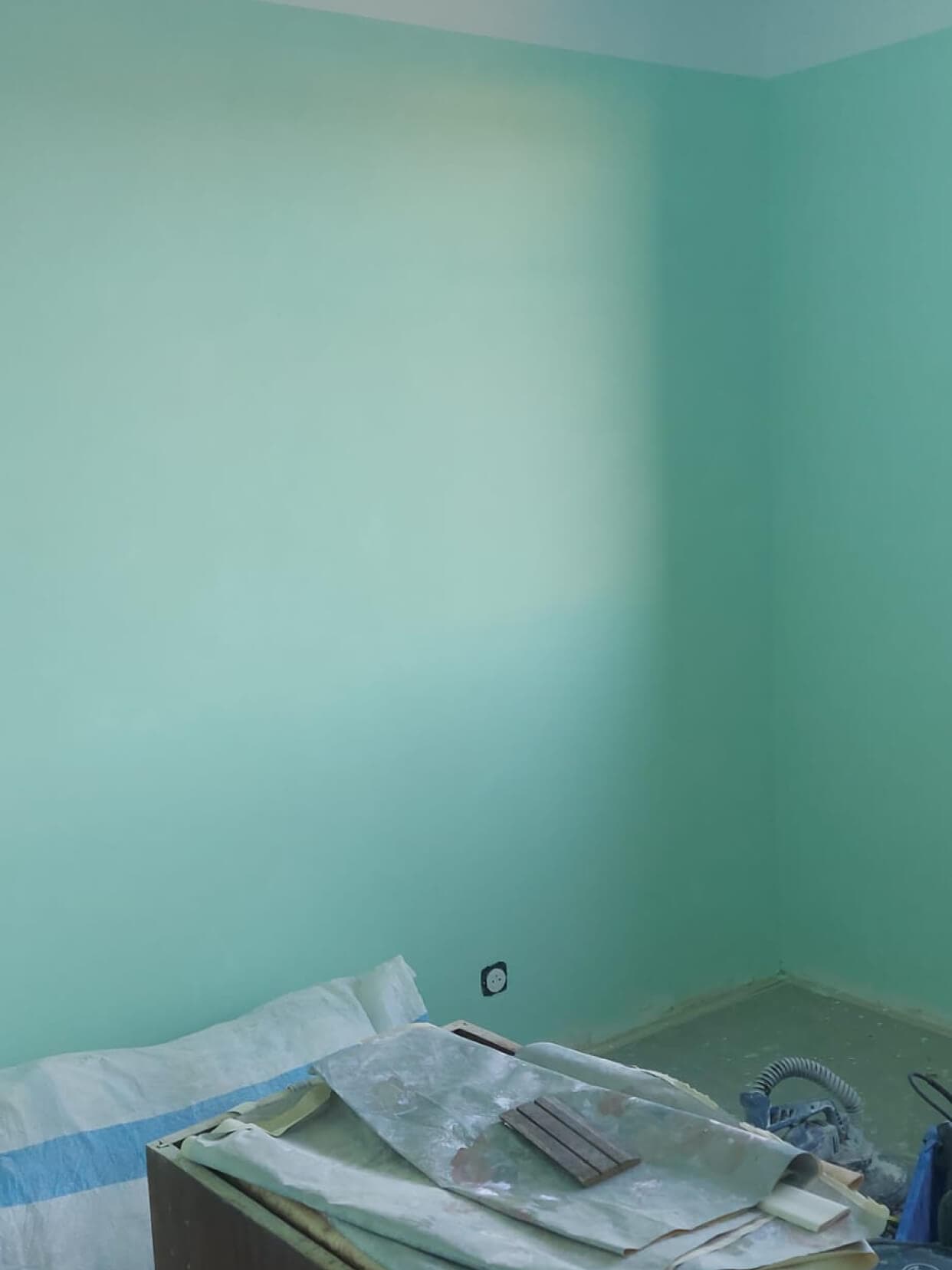
Inès painted the walls of her home in various colors.
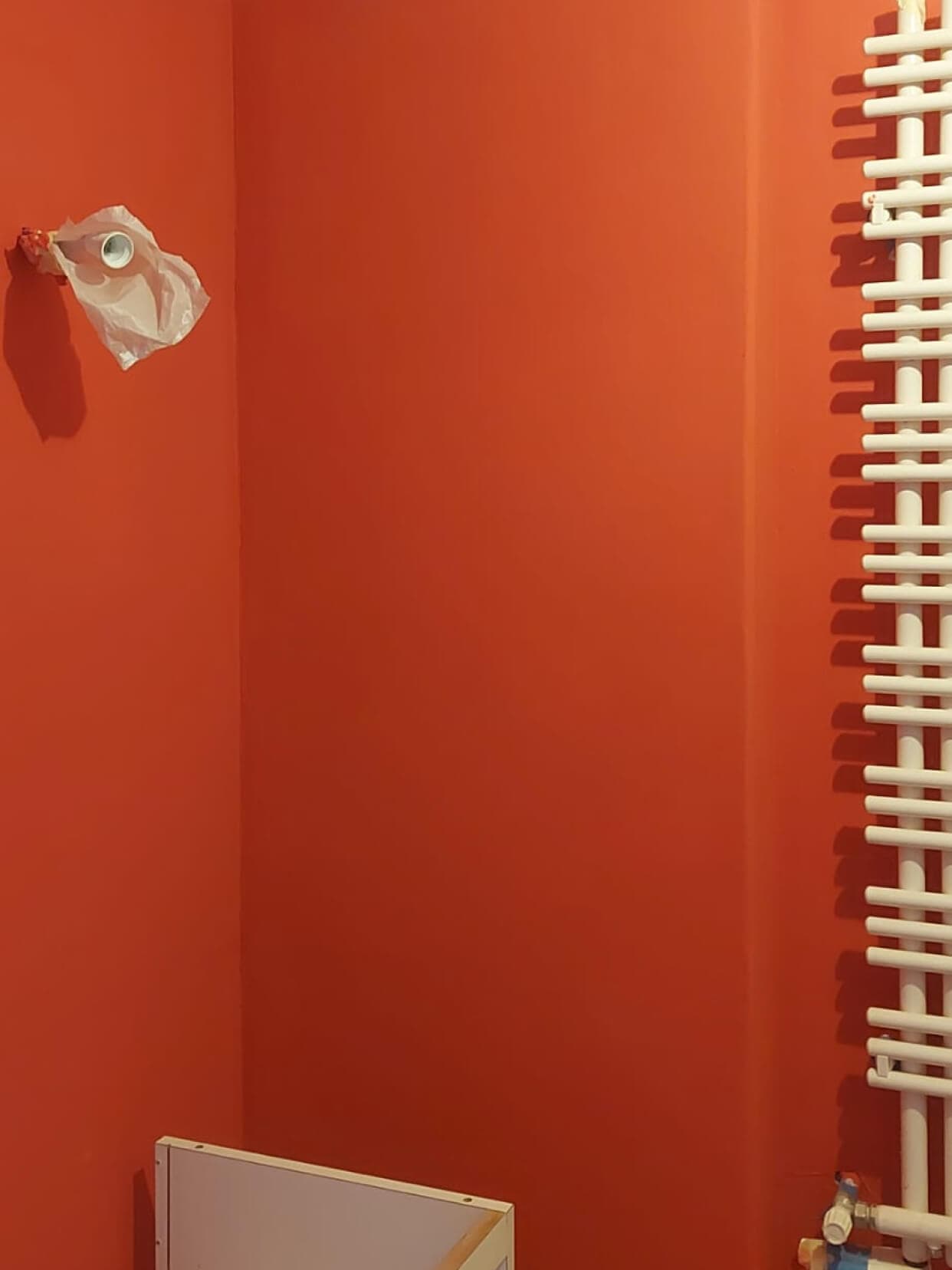
Inès painted the walls of her home in various colors.
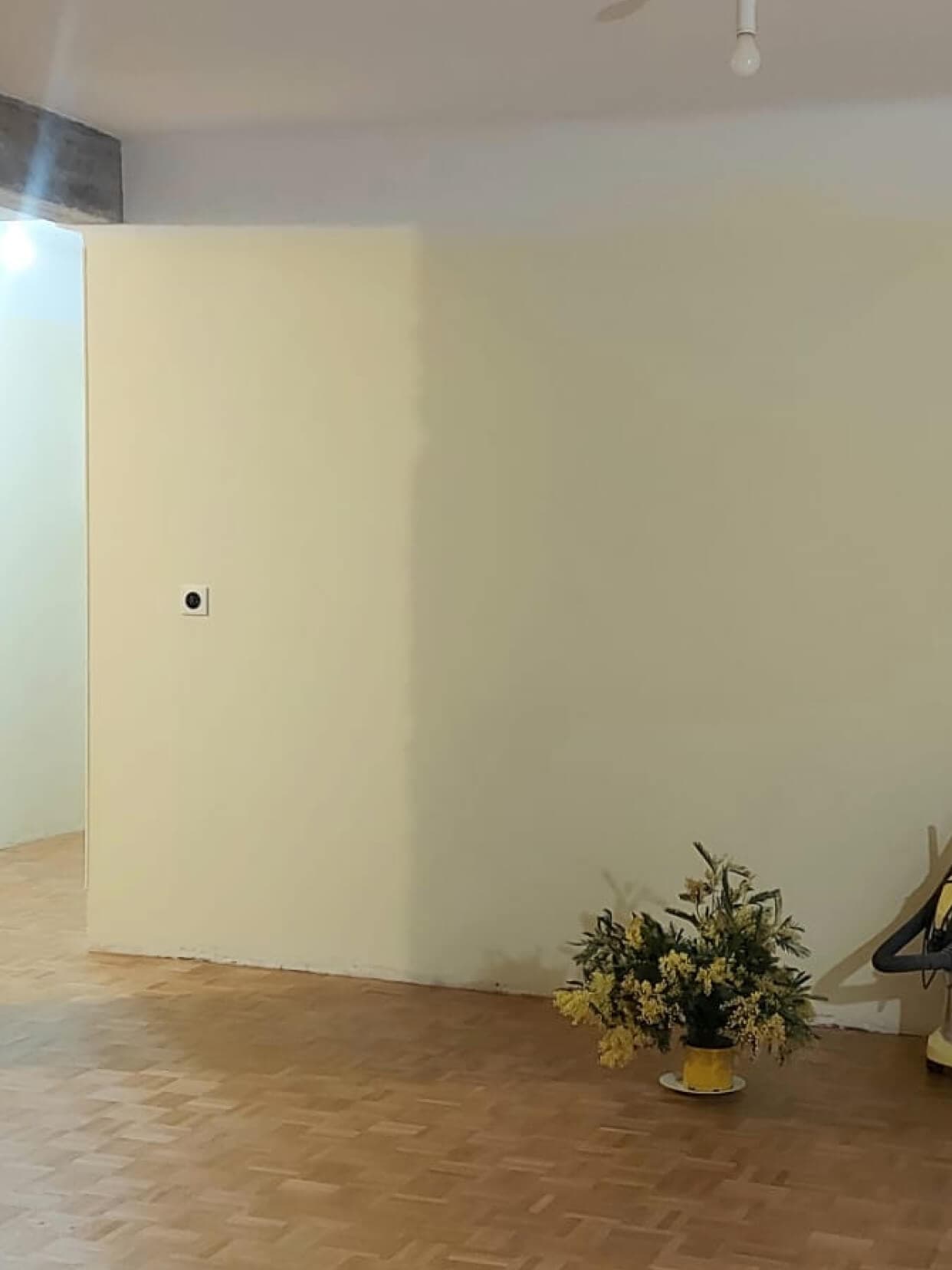
Inès painted the walls of her home in various colors.
This time, along with the bags came a set of small installations made especially for us by Inès. These wavy weavings, also made by Ghanaian weavers, are inspired by the shape of the waves that form when stones are thrown in the water. The huge circular straw mats are reminiscent of a lake, or raindrops in a lake. Now FRAW has a small lake with lots of straw bales floating on it, an image Inès says she loves.
